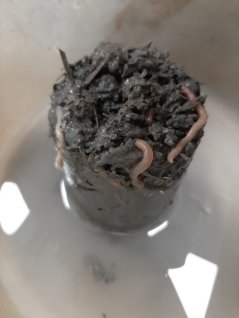
News
Can the power of biota bring rocks to the front of climate solutions?
A newly funded European research consortium investigates whether a low-energy solution for carbon capture can be designed using an ooze of rocks, fungi, bacteria and earthworms. This research is part of the BAM! (Super-Bio-Accelerated Mineral weathering) project, which is funded by a prestigious grant of the European Innovation Council.
Silicate weathering is a natural process, involving the reaction of rocks like basalt or the olivine-rich dunite with water and carbon dioxide (CO2). The slow mineral weathering controls atmospheric CO2 concentrations on very long time scales, too long for counteracting current increasing atmospheric CO2 concentrations. Scientists worldwide are trying to speed up this process, by grinding these silicates and exposing them to enhanced weathering in e.g. agricultural fields or coastal zones. This Enhanced Silicate Weathering (ESW) can thus act as a CO2 removal technology (CDR), that helps us actively take CO2 from the atmosphere for climate change mitigation. It is now clear that such technologies will be needed on top of fast and strong reductions in greenhouse gas emissions, if we want to keep global warming below the 2°C limit.
The BAM! project now takes a new angle to ESW. Project coordinator Sara Vicca (UAntwerpen, Global Change Ecology Centre): “The BAM! consortium, that consists of a multidisciplinary team of biologists, geologists, soil scientists, reactor engineers and AI specialists, decided to ‘push the reset button’ for ESW, going back to the basics of weathering. We want to see whether we can artificially increase weathering rates to unprecedented levels at a reactor scale. We want to transform ESW so that we can achieve carbon capture directly at CO2 emission sources, rather than in the natural environment. Our ambitious goal is to pave the way for a cheap and energy-efficient technology to get rid of CO2 before it even enters the atmosphere”.
To achieve this, BAM! focuses on the power of natural biota. Soil-specialist Jan Willem van Groenigen (Wageningen University & Research, Soil Biology): “The intriguing aspect of BAM! is that it does not aim to speed up the weathering process by the most obvious candidate: temperature. Earlier efforts have been made there, but all proved to be very energy expensive, which is not ideal for a climate solution. The BAM!-team went back to the basics: in nature, weathering of silicates really speeded up when biota appeared. Plants, fungi, bacteria and earthworms: they can all have a stimulating effect on weathering.”

After testing hundreds of organism and rock combinations within a unique set of batch experiments, the BAM! project will bring the most weathering-efficient combination in a bioreactor. This bioreactor aims to increase weathering rates of 3-4 orders of magnitude, by uncovering synergies yet unknown to science. The team brings together scientists from Wageningen University & Research and the universities of Antwerp, Hamburg, and Uppsala.